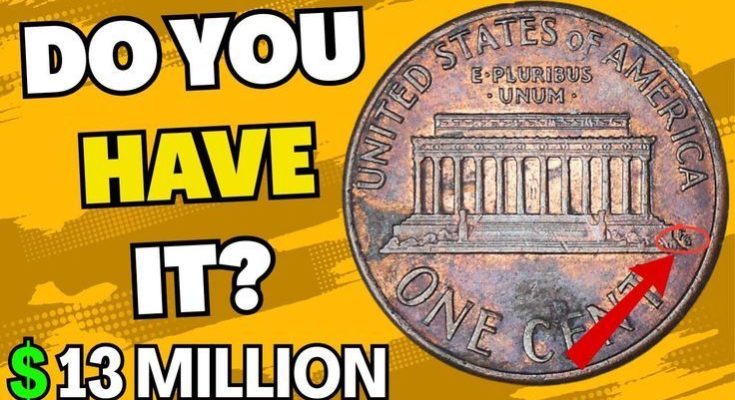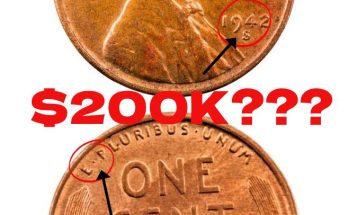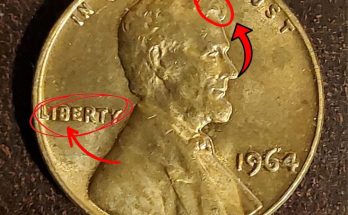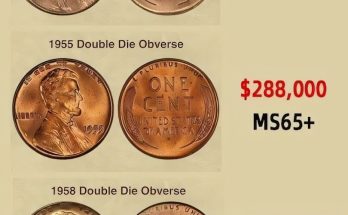“Top 10 Most Valuable Lincoln Pennies That Are Worth Big Money! Are You Throwing Away Money?”
are designed to spark a modern-day treasure hunt, urging viewers to closely inspect their pocket change for potential fortunes. The featured image, a close-up of a Lincoln Cent’s reverse (the side with the Lincoln Memorial), with a striking red arrow pointing to a tiny detail, perfectly embodies the excitement and meticulous nature of numismatics. It’s a powerful visual that suggests a small, easily overlooked feature could be the key to a massive payday.
The Lincoln Penny, a coin with a rich history dating back to 1909, is not only the longest-running U.S. coin series but also one of the most popular for collectors. While most of the billions of pennies minted are worth only their one-cent face value, certain years, mint marks, and—most importantly—minting errors have created some of the most valuable coins in the world. The caption’s reference to “Big Money” and “throwing away money” speaks directly to the dramatic price jumps that these rare coins command at auction, transforming a common item into a six- or even seven-figure investment.
The most famous of these valuable pennies is the 1943 Lincoln Wheat Penny on a bronze planchet. During World War II, the U.S. Mint switched to a zinc-coated steel composition to conserve copper for the war effort. However, a small number of bronze blanks from 1942 were accidentally struck with the 1943 die. These copper-colored pennies are extremely rare, with only a handful known to exist. A 1943-D (Denver) bronze cent sold for over $1.7 million, while others have consistently fetched hundreds of thousands of dollars. The image’s bold claim of a “Top 10” list would almost certainly include this legendary coin.
Another highly sought-after coin is the 1909-S VDB Lincoln Cent. This coin is the key date to the entire series, notable for its low mintage (only 484,000) and the presence of the designer’s initials, Victor David Brenner (VDB), on the reverse. The initials were controversially removed shortly after the coin’s release, making the few that were minted with them incredibly valuable. High-grade examples of this coin can sell for tens of thousands of dollars, and even a circulated one is worth a substantial amount.
The list of valuable pennies also includes minting errors that occurred in later years. The 1955 Doubled Die Obverse is a perfect example. A significant minting error resulted in a striking double image on the date and lettering, a flaw so pronounced that it’s often visible to the naked eye. This iconic error coin can be worth a significant amount, with high-grade examples selling for tens of thousands of dollars. The visual of the penny in the photo, with its clear details, is a nod to the fact that these rare coins are often in pristine condition.
Other valuable pennies include the 1914-D Lincoln Cent, another key date with a low mintage, and the 1944 Lincoln Cent on a steel planchet. The latter is the inverse of the 1943 error—in 1944, the Mint returned to copper, but a few leftover steel blanks from the previous year were accidentally used. These steel 1944 cents are exceedingly rare and can be worth over a million dollars.
The photo and caption serve as an excellent entry point into the world of coin collecting. They highlight that the value of a coin is not just about its age, but about its history, rarity, and the small, often accidental, details that set it apart. The red arrow pointing to a specific, and likely error-related, feature on the coin’s reverse is a visual cue that encourages viewers to become active participants in this hobby, meticulously checking their own coins in the hope of finding a hidden treasure. It’s a powerful and effective message that blends the thrill of the hunt with the potential for life-changing financial reward.



